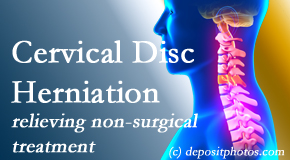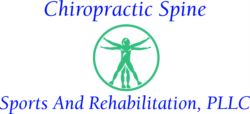Chiropractic Spine Sports And Rehabilitation Cares for Cervical Disc Herniations and Related Radiculopathy
Chiropractic Spine Sports And Rehabilitation takes care of Tonawanda neck pain patients due to cervical spine disc herniations that cause arm pain radiculopathy. Non-surgical care of arm pain radiculopathy helps Tonawanda neck pain and arm pain sufferers find some relief without surgery.
CERVICAL RADICULOPATHY
In managing for cervical spine-related arm pain (aka cervical radiculopathy), research guidelines state conservative management as a first-line treatment alternative over surgery. Clinically, cervical radiculopathy can pose as numbness, paresthesia, motor change, reflex change and/or sensory change. Researchers have been collaborating to set guidelines for its non-surgical management and treatment at various stages of pain including acute, subacute, and chronic. (1) Chiropractic Spine Sports And Rehabilitation considers such guidelines in planning non-surgical treatment for our Tonawanda chiropractic patients.
GUIDELINES FOR TREATING CERVICAL DISC HERNIATIONS
In writing the non-surgical guidelines, researchers described the risk-benefit ratio for surgical treatment of cervical radiculopathy as less beneficial than for non-surgical, conservative care. When studying the care of cervical radiculopathy through its stages, the non-surgical interventions’ guidelines move from acute/more passive care to more active, individualized, self-managed care in the chronic phase. Particularly, for the acute stage, multimodal management involving spinal manipulation, patient education, exercise, and positioning that eases the pain were helpful. For subacute cervical radiculopathy, enhanced specific exercises, supervised motor control motions and/or mobilization may be incorporated. For chronic pain, general aerobic exercise and strength training, postural instruction, and ergonomic assessment of job-related activities may be added}29}. (2) We understand that our neck and arm pain patients appreciate activities like this that allow them to return to doing what they want to do.
TIME AND THE CERVICAL DISC HERNIATION
Overall, in one systematic review study, 56.4% of degenerative cervical radiculopathy patients - 39.1% of conservatively treated patients and 60.5% of surgically treated patients – reported motor deficits prior to treatment. (3) A spine surgeon described a case report of a patient who was ready to undergo cervical spine discectomy/fusion surgery for a C4-C5 disc herniation whose disc resorbed on a confirming repeat MRI, making surgery unnecessary. The researcher conceded that more research was accessible on the decrease of lumbar disc herniations seen on MRI by 34.7% to 95% over 6 to 17 months and total resolution of the disc in 43% to 75% yet postulated that cervical disc herniations were likely to do the same. (4) Like the author, Chiropractic Spine Sports And Rehabilitation holds out hope for our cervical disc herniation and cervical radiculopathy patients that surgery may not be required. Our conservative Tonawanda chiropractic treatment will quite possibly help healing.
CONTACT Chiropractic Spine Sports And Rehabilitation
Listen to this PODCAST with Dr. Umar Ellahie on The Back Doctors Podcast with Dr. Michael Johnson as he illustrates cervical radiculopathy and its relieving care with The Cox® Technic System of Spinal Pain Management.
Make your Tonawanda chiropractic appointment now. Cervical radiculopathy and cervical disc herniation sufferers have a pain-relieving partner at our clinic.

